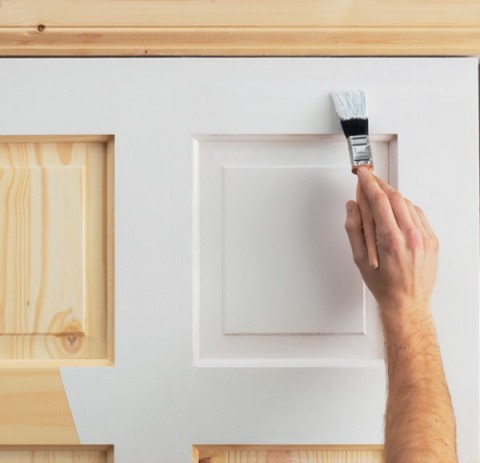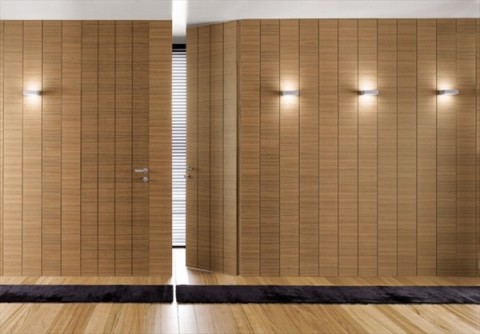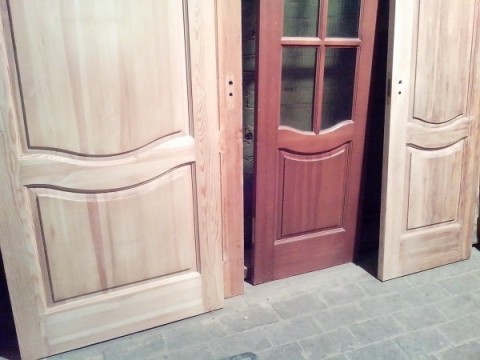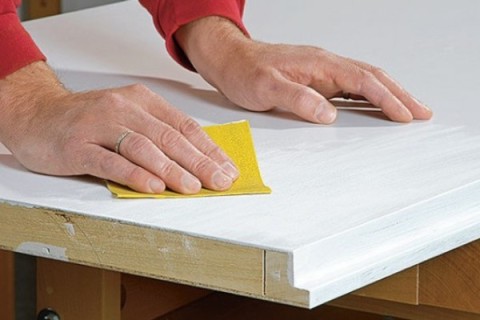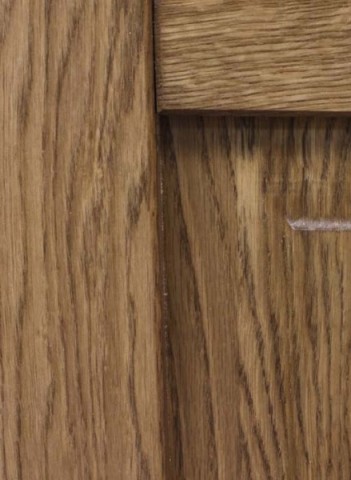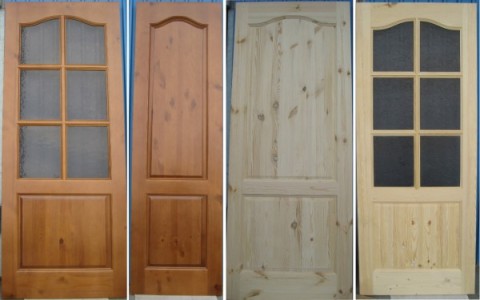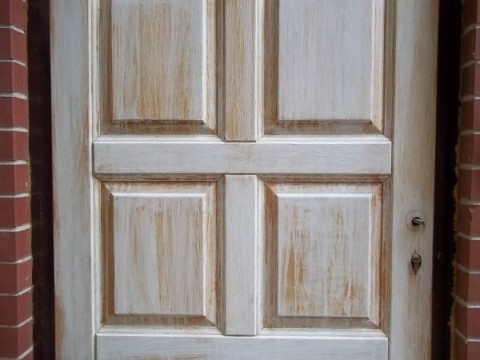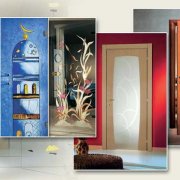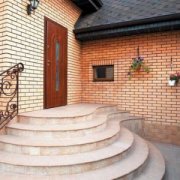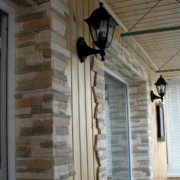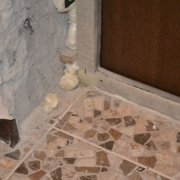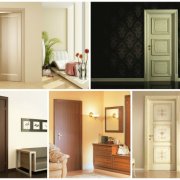Doors for painting: how to prepare for further decoration
Today on sale you can often find primed doors for painting from solid wood or wood-fiber boards. They cost less, plus they give the opportunity to finish them at your discretion. What are these doors, as well as how they lend themselves to coloring, we will tell in this article.
The content of the article
Types of doors designed for self-decoration
Similar products are classified by such parameters as design and material of manufacture.
Constructions
There is nothing special to talk about: like everyone else interior doors, they can be oar and sliding. Only folding structures are not included in this category.
But another subspecies is added - these are doors hidden for painting. Their feature is the special design of the box, allowing you to hang the canvas so that there is practically no gap between it and the wall.
The absence of platbands and visible hinges leads to the fact that in the closed position the door completely merges with the wall, especially if it is finished with the same material. This can be not only paint, but also wallpaper or wall panels.
Only a door handle gives out the presence of an opening in the wall, but you can also hide it if you wish using modern technology.
Materials
Depending on what the door is made of, it will differ in its characteristics, appearance and susceptibility to decoration. As a rule, a door leaf for painting is a wood product or its combination with other materials.
So:
- Wooden doors are completely made from an array of any one species of wood. They are the most environmentally friendly, durable and reliable, have excellent noise and heat insulation. Such "whims" of natural material, such as sensitivity to moisture and temperature extremes, are noticeable only in the case of those doors that are used in saunas, unheated rooms or as entrance doors. Interior rooms usually behave stably.
- Doors MDF for painting Is a wooden frame sheathed with boards made of wood-fiber material. Between them is a cellular filler, reinforcing the structure and increasing its heat and noise insulation properties. They are significantly lower than natural products, but such doors are less susceptible to environmental influences. Their advantages also include low weight and low price.
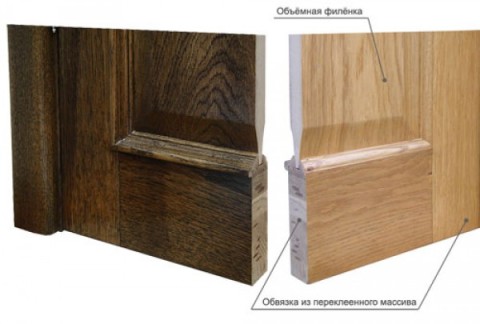
Staining Features
The choice of paint and the method of coloring will differ depending on the material of which the door is made, and the degree of its initial finish.
Tip. When buying, ask the seller if the door leaf was primed for painting. If not, then in addition to paint, you will need a primer on wood, and in some cases, putty (seeHard putty on wood: how to do it wisely).
MDF
Such doors are usually already primed, so you only have to paint it. The instruction allows the use of any tools for applying paint - brushes (seePaint brushes: which ones to choose), roller, spray.
A feature of MDF is its high porosity, so the paint is absorbed into the material, and quite unevenly. To achieve a uniform color, you have to apply two, or even three layers.Each coat must dry before applying the next. And before the finish layer, it is advisable to sand the surface with a thin sandpaper.
Note. Choose paint designed for wood products only. Conventional interior compositions for walls and ceilings in this case are not suitable.
Array
Doors from solid wood for painting, and indeed any doors are not made of hard wood, as they are very difficult to process. Usually medium hard (beech, birch, oak, ash) and low hard (alder, linden, nut, spruce, pine, fir) are used. But the coloring technology depends not only on the hardness of the wood, but also on the type of wood.
We will first deal with hardwood. Here the basic rule applies: the greater the density of the wood and the lighter it is, the easier it is to exactly get into the desired shade. At the same time, dark varieties, having their own intense color, will require more layers of paint. Like the porous into which it is absorbed.
Very often, for finishing the doors, not coating, but glazing paint or all kinds of tinting impregnations and stains are used, preserving the beautiful structure of the tree:
- Birch treeif it is well dried and sanded, lends itself well to both varnishing and staining (seeHow to paint the door: select the option) Light color and high density of wood contribute to this.
- Ash also differs in hardness and light shade. But it is a sin to paint over a very beautiful, pronounced drawing of a slice. Although this is quite possible and quite simple to do.
- Oak It features solid but dark wood and a very attractive, elegant texture. Invisible doors for painting are not made of it, except under the order, because to paint over such beauty is a real blasphemy. For this purpose, you can use less noble and cheap wood. And oak doors are covered with wood stains.
- Linden, walnut and alderrelated to low hard rocks, at the same time they have low porosity, therefore, they yield equally well to finishing with both tinting compositions and covering ones.
Softwood products are much more resistant to environmental influences due to the presence of resin in them. But it can play a negative role both in painting and in the operation of doors.
The fact is that with increasing temperature, such wood can “cry”, emitting droplets of resin, which will spoil the appearance of the canvas and can cause inconvenience, sticking to hands and clothes.
Tip. When buying, make sure that the wood is dry and “milky”. There should be no tar pockets on it. If they are, they will have to be cut, and the recesses putty.
- Solid pine doors for painting - the most common on the market due to the low cost of raw materials and the flexibility of softwood to processing. But high porosity forces to apply paint in several layers to get a uniform color. Especially in the case of light shades.
- Fir Doors and spruces will require less effort when finishing, as they contain less resin and absorb paint more evenly.
The staining technology itself is standard. Basic requirement: paint should be applied in a thin layer. Better to have more layers than smudges and bumps on the surface.
If you do not know how to paint an antique door, you can use the simplest method with two paints of different colors. After the first layer has dried, a layer of a different color is applied to it and again wait for drying.
After that, they take the skin and sometimes peel off the top paint, creating the effect of shabby and scuffed from time to time.
Conclusion
Doing your own door coloring not only saves money, but also allows you to make them unique, ideally suited for color and style to your interior. Any paint can be used for wooden surfaces, including one that creates a waterproof film on the surface. The door does not have to “breathe”; it has slightly different tasks.
The video in this article will give you more information on this topic.
